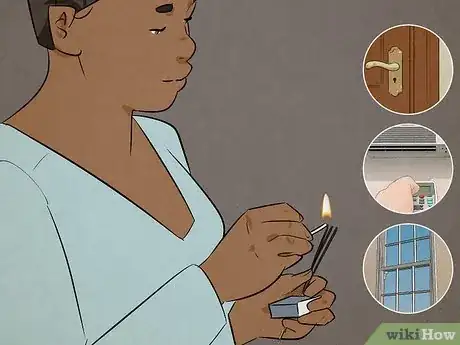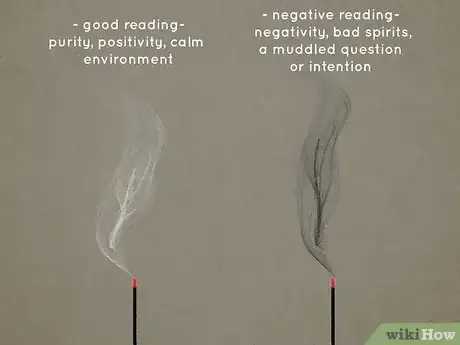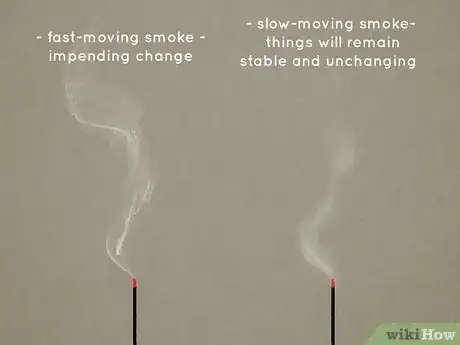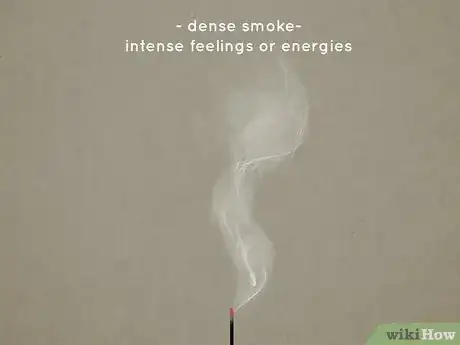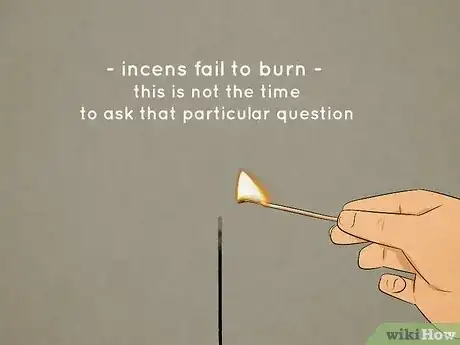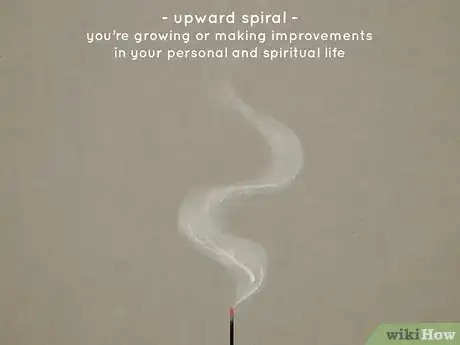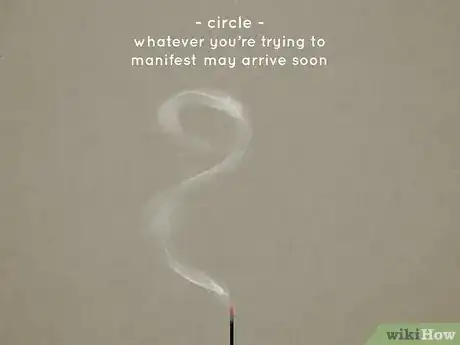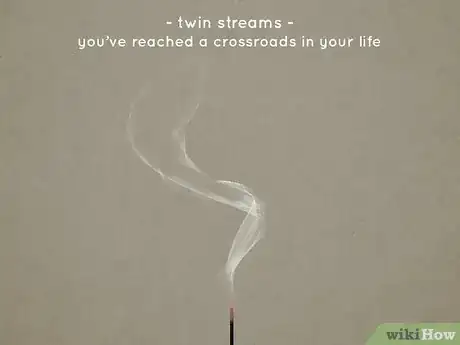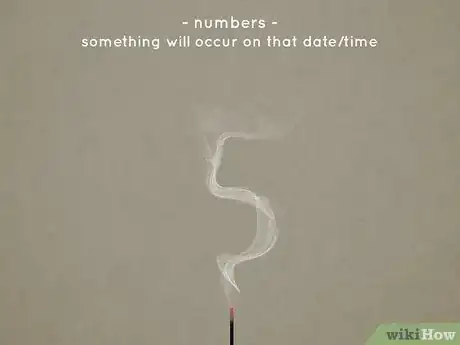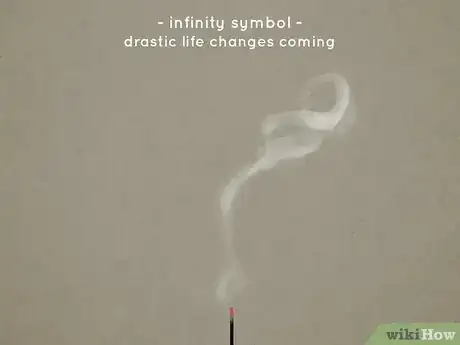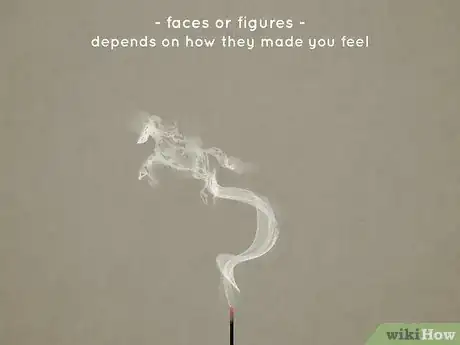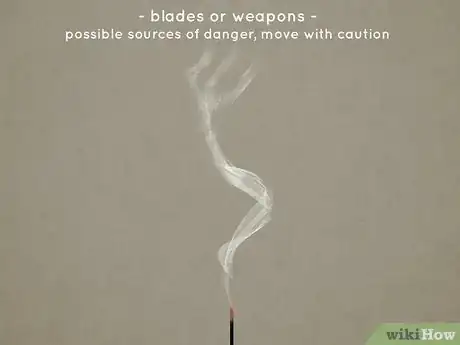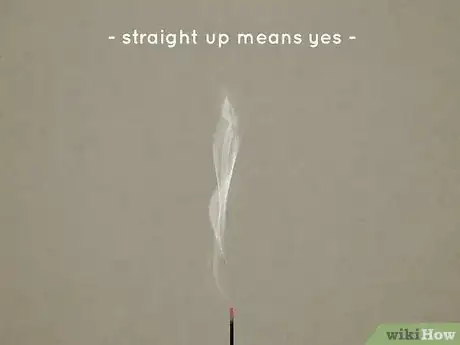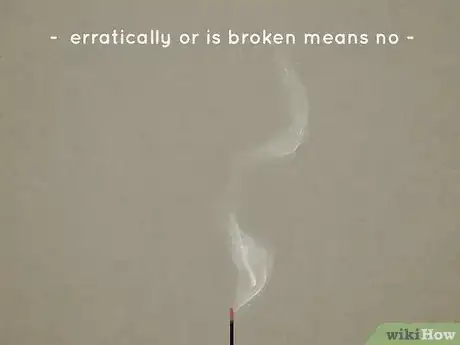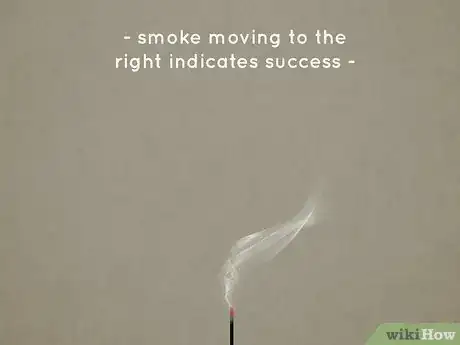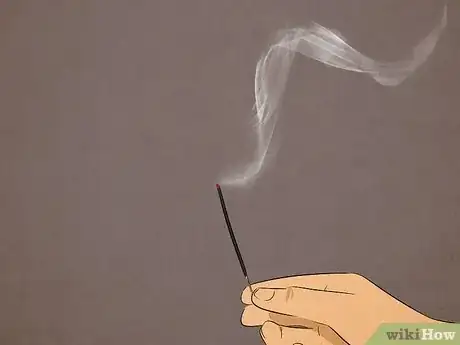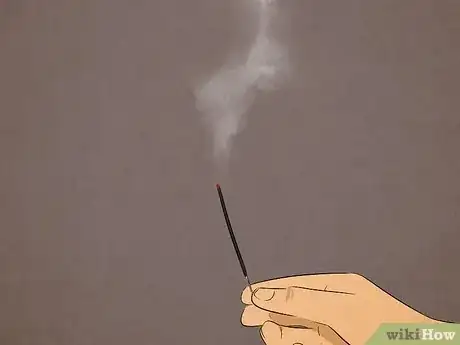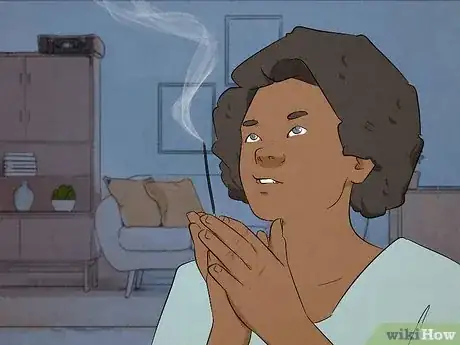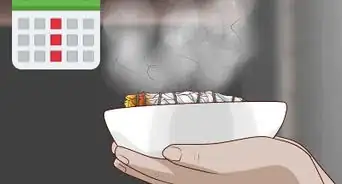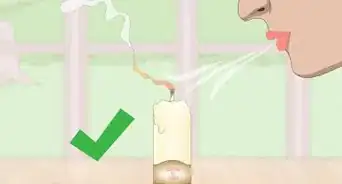This article was co-authored by wikiHow staff writer, Luke Smith, MFA. Luke Smith is a wikiHow Staff Writer. He's worked for literary agents, publishing houses, and with many authors, and his writing has been featured in a number of literary magazines. Now, Luke writes for the content team at wikiHow and hopes to help readers expand both their skillsets and the bounds of their curiosity. Luke earned his MFA from the University of Montana.
There are 14 references cited in this article, which can be found at the bottom of the page.
This article has been viewed 8,889 times.
Learn more...
Tarot, pendulums, tea leaves. There are many ways to perform divinations, and incense divination, or libanomancy, is a great scrying method to add to your toolkit. While libanomancy can be fickle or even volatile given the delicate nature of smoke, it can also suggest some powerful answers you might not get elsewhere. We’ll fill you in on how to read incense smoke using qualities like color, strength, and pattern, and go over specific scrying situations like yes-or-no questions and omens.
Things You Should Know
- Light your incense in a still room without drafts to get the most accurate reading. Then, clear your mind and focus on your specific question.
- Read smoke that moves to the right or straight up-and-down as generally positive signs, while broken or erratic smoke is often a negative sign.
- Use your intuition to interpret signs like faces, numbers in the smoke; consider your particular situation and ask the incense further questions to clarify.
Steps
Getting Started
-
1Light your incense in a still room with no drafts. Incense smoke is very fickle, and your reading can be disrupted by the slightest breeze. Close any windows and doors, and turn off any fans or AC units. To be totally sure, fill the gap beneath any doors with a towel or other fabric.[1]
- Burning an incense stick is preferable since incense sticks are easiest to read, but libanomancy can be performed with any form of incense.
- In addition, grab some paper and a writing utensil and prepare to take note of what you see, so you can review and meditate on it later.
-
2Clear your mind. When you look to Libanomancy for answers, any noise you might have going on inside your head can impact or cloud your reading.[2] Before you begin, take a moment to relax and clear your mind. Take a few deep breaths, and make sure the room is quiet and free of distractions.Advertisement
-
3Focus on your specific question or intent. Think of your question, or what you want to learn from the incense—things like yes or no questions, questions about your future or success, questions about the purity of the space around you, etc.—and hold it in your head. Don’t let your mind wander; it’s important that your own signals are clear in order to get a clear answer.[3]
Smoke Qualities
-
1Color White represents purity. It also indicates positivity and a calm environment, which portends a good reading. But darker smoke, like gray or black smoke, suggests negativity, bad spirits, a muddled question or intention, or a negative reading.[4]
-
2Speed Fast-moving smoke indicates impending change. If the incense smoke is wafting quickly and has a speedy ascent, it signals that changes are coming soon. Meanwhile, slow-moving smoke suggests that things will remain stable and unchanging for some time.[5]
-
3Density Thick or dense smoke suggests heightened or intense feelings, and is less of a prediction and more of an indicator about the energies you brought with you as you lit the incense.[6]
-
4Strength On occasion, your incense may fail to burn on your first light, or it may extinguish before you’ve had a chance to ask your question or scry your answer. In this case, the incense is telling you that for whatever reason, this is not the time to ask that particular question.[7] Try asking your question later or changing your focus.
-
5Direction If you light the incense and the smoke begins to travel toward you, it may be a sign that someone is thinking about you. Otherwise, smoke blowing away from you often means that a person is trying hard not to think about you.[8]
- If your intent isn’t about someone else, smoke blowing toward you may mean that the object of your manifestation is coming. Blowing away in this case means that you need to work harder to achieve your goal.
Smoke Patterns
-
1Spirals Smoke that spirals or coils as it rises signifies spiritual growth, and suggests that you’re growing or making improvements in your personal and spiritual life. However, if the smoke spirals while moving downward, it may signal that things are spiraling out of control.[9]
-
2Circles Sometimes, the incense smoke forms a distinct, unmistakable circle, like that made when blowing smoke rings. This is a good sign, and means that whatever it is you’re trying to manifest or are hoping for is already coming to be, and may arrive soon.[10]
-
3Twin streams The smoke may split into 2 separate trails as it rises. This signifies that you’ve reached a crossroads in your life, or will be presented with an important choice. It may also suggest that you’ve been stagnant, and it’s time to choose a path forward.[11]
-
4Numbers If you ask the incense a question and see a distinct numeral forming in the smoke, it can mean many things. Commonly, it has to do with time—either the days until an event or a specific date on which something will occur.[12]
-
5Infinity symbol An infinity symbol (∞) in the smoke signifies drastic life changes coming. These may be either positive or negative.[13] Think about your current circumstances, and ask the incense follow-questions like, “When will the change occur?” and “Will it be positive?”
-
6Faces or figures Many people see faces in their incense smoke when practicing divination, but there’s no simple, universal explanation for these, and these signs must be interpreted with your own intuition. Ask yourself how the sign made you feel, how many there were, what it looked like, etc. Focus on your feeling and ask follow-up questions.[14]
-
7Blades or weapons Forks, knives, tridents, spears, etc. all signal danger, and should be noted with patience and gravity. If you see one of these, contemplate your current circumstances or possible sources of danger in your life, and move with caution.[15]
Yes or No Questions
-
1Straight up-and-down smoke means “yes.” If you ask a yes-or-no question and the smoke floats straight up, that indicates a definite “yes.” Smoke that floats straight up but forms patterns like rings or ladders signify a “yes,” but that the answer to your question may not be so straightforward. In other words, it means there’s a caveat to the affirmative answer, which may be revealed in time.[16]
-
2Smoke that moves erratically or is broken signifies a “no.” While the answer may be cut-and dry, you can glean more information by asking further, more specific questions. For example, if the smoke answered “no” to a question like, “Will I achieve my goal this month?” ask the follow-up question, “Will I achieve my goal soon?” In this way, “no” answers can still be useful.[17]
Questions about Energy & Omens
-
1Smoke leaning to the right is a good omen. When asking the incense smoke about the energies around you, right-leaning smoke suggests positive energies. Left-leaning smoke suggests bad omens. Rising but choppy smoke suggests a troubling situation coming soon, and uneven or inconsistent streams portend illness.[19]
- If your smoke splits into streams, the number of smooth streams you count suggests the number of people who will come to support you. Choppy streams signify conflict among these people.
-
2Dense smoke signifies widespread events to come. When scrying for omens, thick or dense smoke may portend a significant, broad-scale event that will impact many people. This event may be either positive or negative.[20]
-
3Distinct shapes in the smoke signal danger. Sharp corners, ragged edges, or other hard, distinct shapes signal danger or trouble when asking about omens and energies.[21] Moving forward, carry yourself with caution and wariness.
References
- ↑ https://youtu.be/J3JRw1l9aWc?t=475
- ↑ https://youtu.be/J3JRw1l9aWc?t=392
- ↑ https://youtu.be/J3JRw1l9aWc?t=392
- ↑ https://spells8.com/incense-smoke-meaning/
- ↑ https://www.wickedobscura.com/blog/2022/9/5/what-is-libanomancy
- ↑ https://spells8.com/incense-smoke-meaning/
- ↑ https://www.mermadearts.com/i/divination-with-incense
- ↑ https://spells8.com/incense-smoke-meaning/
- ↑ https://spells8.com/incense-smoke-meaning/
- ↑ https://spells8.com/incense-smoke-meaning/
- ↑ https://spells8.com/incense-smoke-meaning/
- ↑ https://www.youtube.com/watch?v=J3JRw1l9aWc&t=735s
- ↑ https://youtu.be/J3JRw1l9aWc?t=784
- ↑ https://youtu.be/J3JRw1l9aWc?t=887
- ↑ https://www.youtube.com/watch?v=J3JRw1l9aWc&t=930s
- ↑ https://www.youtube.com/watch?v=J3JRw1l9aWc&t=155s
- ↑ https://www.youtube.com/watch?v=J3JRw1l9aWc&t=225s
- ↑ https://youtu.be/J3JRw1l9aWc?t=285
- ↑ https://spellhouse.ca/blogs/news/libanomancy-the-art-of-reading-incense-smoke
- ↑ https://spells8.com/incense-smoke-meaning/
- ↑ https://www.youtube.com/watch?v=J3JRw1l9aWc&t=597sM
